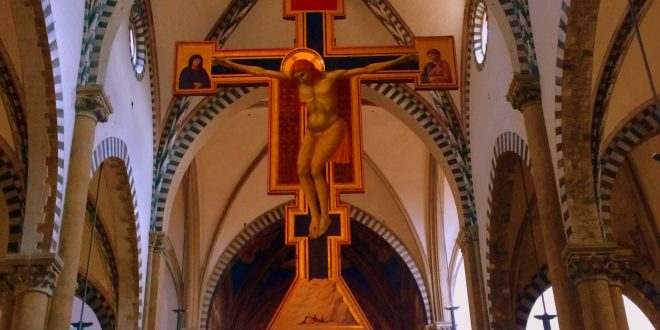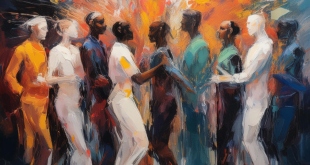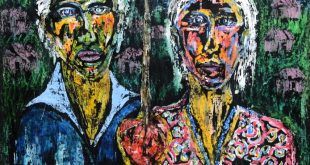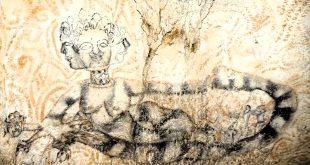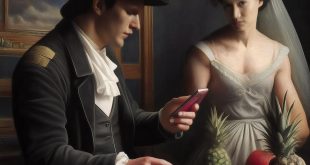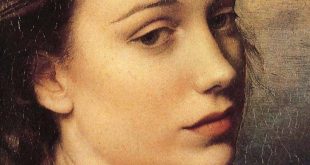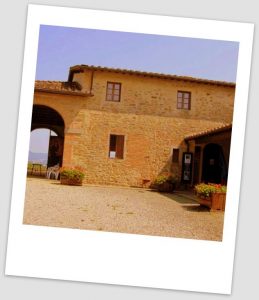 He is the artist who has revamped Italian painting (as well as Dante, his contemporary, is considered the father of the Italian language). His glory is given to works scattered in almost all of Italy, from Rome to Florence, Assisi and Rimini to Padua. His artistic imprint was so important as to influence the painting schools of the fourteenth century and the Renaissance artists. His propensity to physical and psychological characterization of the characters, is evident in the decorations that he achieved in the Bardi and Peruzzi chapels (in the church of Santa Croce, in Florence). The celebrations for the 750th anniversary of the birth of Giotto di Bondone, to remember the important Tuscan painter on the anniversary of his birth, which took place in 1267 in Vespignano.
He is the artist who has revamped Italian painting (as well as Dante, his contemporary, is considered the father of the Italian language). His glory is given to works scattered in almost all of Italy, from Rome to Florence, Assisi and Rimini to Padua. His artistic imprint was so important as to influence the painting schools of the fourteenth century and the Renaissance artists. His propensity to physical and psychological characterization of the characters, is evident in the decorations that he achieved in the Bardi and Peruzzi chapels (in the church of Santa Croce, in Florence). The celebrations for the 750th anniversary of the birth of Giotto di Bondone, to remember the important Tuscan painter on the anniversary of his birth, which took place in 1267 in Vespignano.
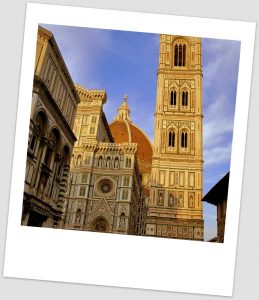 There are many initiatives aimed at enhancing Giotto di Bondone, the inspirer of modern painting, what has been one of the greatest teachers of mankind. The news about his youth are very few. We know that he was born into a family of farmers, not far from Florence. It was born in 1267 in the municipality of Vicchio, and to let him in different kinds of art had been the Cimabue teacher who – according to legend – he realized the ability Giotto seeing him draw on a stone one of the sheep he brought to pasture. The 750th anniversary of the birth of the genius, who gave great contribution to the departure from the medieval phase (dominated by the Byzantine model), are waiting you for a conference in the spring, an exhibition of artists at Palazzo Pegaso, an art prize named after him.
There are many initiatives aimed at enhancing Giotto di Bondone, the inspirer of modern painting, what has been one of the greatest teachers of mankind. The news about his youth are very few. We know that he was born into a family of farmers, not far from Florence. It was born in 1267 in the municipality of Vicchio, and to let him in different kinds of art had been the Cimabue teacher who – according to legend – he realized the ability Giotto seeing him draw on a stone one of the sheep he brought to pasture. The 750th anniversary of the birth of the genius, who gave great contribution to the departure from the medieval phase (dominated by the Byzantine model), are waiting you for a conference in the spring, an exhibition of artists at Palazzo Pegaso, an art prize named after him.
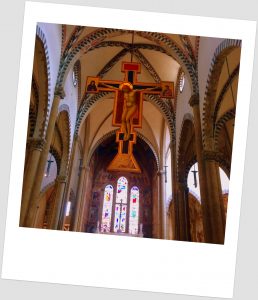 Giotto di Bondone left us the marvelous Crucifix that you can admire in the Basilica of Santa Maria Novella in Florence, also making to the city a beautiful Campanile. Very important for his artistic training was the journey he undertook in Rome, before joining the yard of Assisi (at that time, Rome was developing a school of painting). After the Roman experience, Giotto worked at the Basilica of St. Francis of Assisi, made up of a lower church (with a series of frescoed chapels by different artists), and an upper church (with an iconographic system represented by the stories of the ancient and new testament, connected by the illustrations of the life of St. Francis). Around 1305 Giotto worked in Padua, where he decorated the chapel built by Enrico Scrovegni to atone for the sins of the father (condemned by Dante in his Divine Comedy to hell).
Giotto di Bondone left us the marvelous Crucifix that you can admire in the Basilica of Santa Maria Novella in Florence, also making to the city a beautiful Campanile. Very important for his artistic training was the journey he undertook in Rome, before joining the yard of Assisi (at that time, Rome was developing a school of painting). After the Roman experience, Giotto worked at the Basilica of St. Francis of Assisi, made up of a lower church (with a series of frescoed chapels by different artists), and an upper church (with an iconographic system represented by the stories of the ancient and new testament, connected by the illustrations of the life of St. Francis). Around 1305 Giotto worked in Padua, where he decorated the chapel built by Enrico Scrovegni to atone for the sins of the father (condemned by Dante in his Divine Comedy to hell).
To pursue this issue, you can digit: http://meetingbenches.com/2017/01/giotto-di-bondone-12671337-italian-painter-propensity-physical-psychological-characterization-characters/
 Meeting Benches World art in all forms
Meeting Benches World art in all forms
